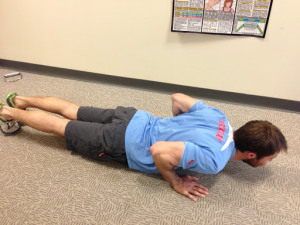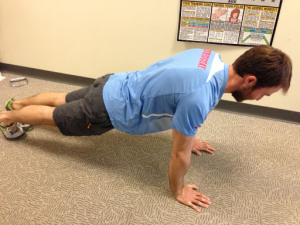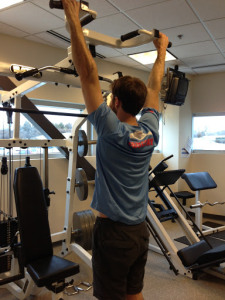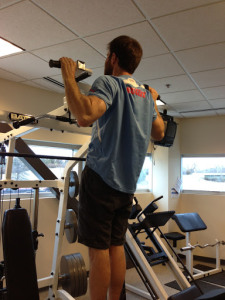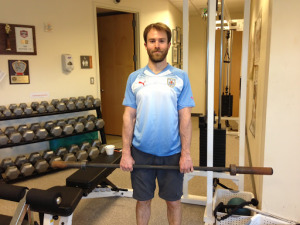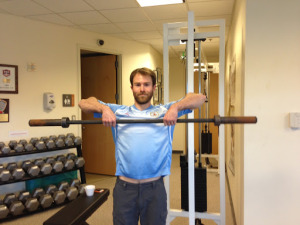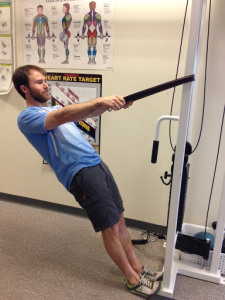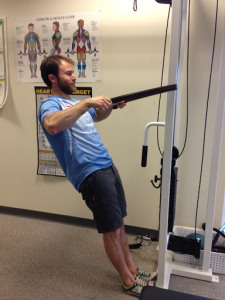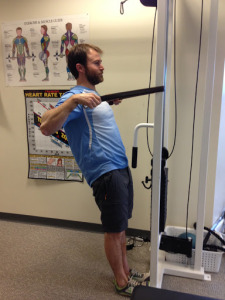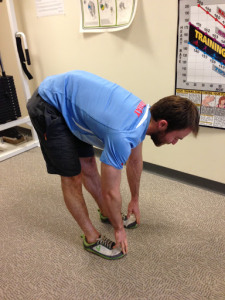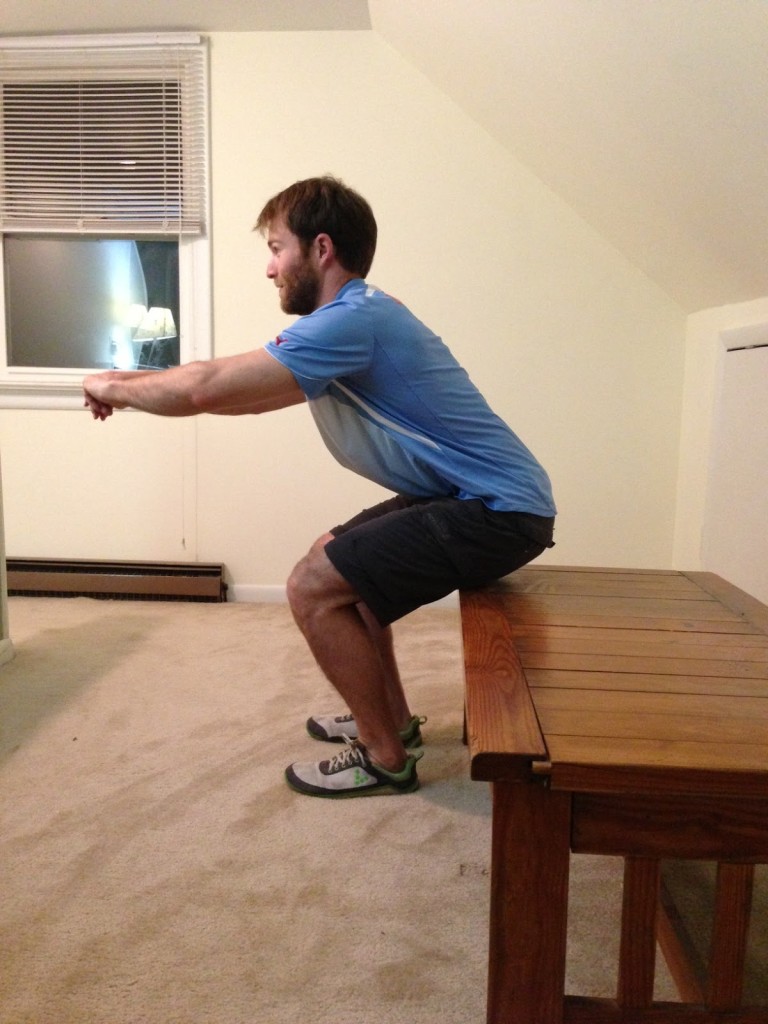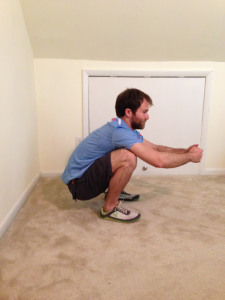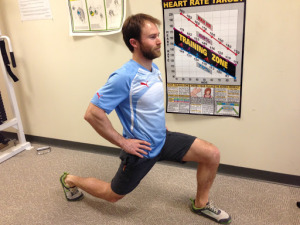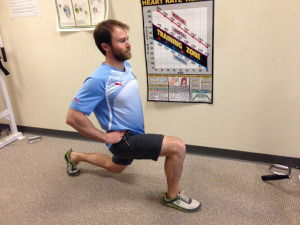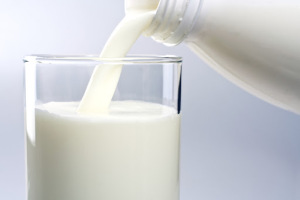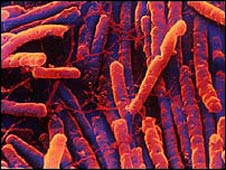If you were stranded on a desert island and could only do 5 exercises…. well that’s just silly. If you were stranded on a desert island, you’d have to do all kinds of activity to build yourself shelter, make clothing, hunt for sustenance and protect yourself. You’d get all the “exercise” you needed from real movement and daily activities.
Let’s talk about something more of us can relate to. If you were stranded in an office for 40 hours a week, had numerous other obligations that required lots of sitting and reduced your exercise time, what 5 exercises would you do? You would want to incorporate some of the basic movements your body is supposed to do. Push, pull, bend, squat, and lunge. There are plenty of other movements you’d likely do if you had more time, but we’re looking for the best bang-for-the-buck, time wise.
Pushing may be the easiest to incorporate. Find a small space and do a few pushups. Done! Pushups will work your chest, and triceps; a couple major muscles incorporated when pushing. Pushups will also activate your core (abs, obliques, and lower back) to keep your butt from sinking when you’re in proper position. If you can’t do a standard pushup, try it from your knees instead of your feet. If you can’t do knee pushups, try some wall pushups. Keep your back straight, and your elbows close to your body.
If you’re able, pull-ups and chin-ups are a great way to work a lot of your pulling muscle. All the major back muscles are used, as well as the biceps and shoulders.
Since many people cannot do a pull-up, here are some other options: Lat pull down, upright row, seated row. These exercises do end up isolating slightly different muscles, but all of them work your biceps, lats, and upper back to some degree.
While you might be able to find a heavy bar to lift, it seems like a lot of those exercises require a gym, or some kind of weights, right?. If you don’t have time between meetings or coffee breaks to use your office gym (if you even have one), take your belt, a strap, or a rope and wrap it around a pole or another sturdy structure about chest high and do this variation of the seated row. Place your feet at the base of the pole and lean back, grabbing the belt for support. When the belt is taut and your arms are straight, you’re in the starting position. Keeping your feet still, pull yourself towards the pole with with your arms, bringing your chest closer to the pole as you squeeze your shoulder blades together.
Bending is a necessary daily activity. You might have to tie your shoes, pick something up off the floor, or even (gasp!) lift a box. We’re told to “lift with your legs” which involves squatting (and will be our next movement), so that we don’t injure our backs. That’s a smart move if you have a weak lower back, like most of us. But what if we wanted to concentrate on strengthening our backs to prevent injury? Instead of the “don’t use it because you’ll hurt it” mentality, think of the “use it or lose it” mantra.
When starting out, begin by stretching out your hamstrings and gluts and warming up before trying to strengthen your lower back. Reaching for your toes while keeping your lower back straight will warm up your lower back muscles while stretching your hamstrings. Concentrate on pivoting at the hips without rounding your back. This will stretch those muscles so when they are used, they won’t be so tight they cause an injury.
A great way to strengthen your lower back is to do “back extensions.” These can be done in the same place as the pushups. Lie down, stomach on the floor and lift your head and upper torso as much as comfortable, using your lower back to lift. Put your arms out to your sides and imagine you are an airplane. Point your thumbs up towards the sky and squeeze your shoulder blades together. Keep your toes on the floor when starting out and slowly progress to lifting your toes and activating your glutes. Lift and hold for a count of two. That’s one repetition.
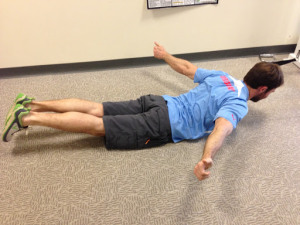
Squatting can be a big help when the time comes to lift something heavier. Your lower back muscles are very small in comparison to your glutes, quads and hamstring muscles which will activate when you squat properly. I posted about why and how to squat a little while ago. Most people will tell you squatting so far down that your butt is lower than your knees is a good way to cause knee injury. Again, “use it or lose it”. If your muscles aren’t trained to do something, you’re more likely to hurt those muscles if they are called in to action. If we train our muscles and joints to move through their full range of motion, we’ll actually be able to do so.
You can start out by squatting down onto a coffee table or other short furniture. A lowered desk chair would work just fine. Slowly lower yourself, keeping your back straight on the bench or chair keeping your balance by sticking your butt back and pivoting at the hips and bending your knees. Push through your heels (think about lifting your toes to focus on pushing through the heels) to stand back up. Once the bench is easy, you can progress into a full squat.
Our last exercise is the lunge. You might be wondering why lunging is in the 5 exercises since it seems like we don’t do this motion very regularly. Lunging works a lot of important muscles, stretches others, and helps improve your balance all at the same time. They also don’t require a lot of space, or any extra equipment. Just find a spot where you can take a really big step forward. Not only is this a good glute and quad workout, but you’ll get a nice stretch through your hip flexors on the back leg, which will be a good change from being seated.
Step forward and keep your front knee over your front foot, preventing the knee from going past the toes. Keep your back toes pointed forward and sink your hips down until your hips are at the same height as your knee and you form a 90 degree angle in your knee. Push back off your front heel to return to the starting position and then step forward with the other foot and push back in the same manner. That’s one repetition. I like to keep the back foot farther back to stretch the hip flexor. If the hip flexor stretch is too uncomfortable, take a smaller step and let the back knee go straight down instead of slightly back.
If you do 10 repetitions of each exercise, and did 3 sets in a circuit (one exercise after the other, then going back to the first exercise), it probably won’t take you more than 10 minutes. Doing this twice a day will get you blood moving and keep your joints lubricated. Next time we’ll get into how to create a “home gym” on the cheap.
Are there any other exercises you love? Post your time crunched exercise ideas in the comments!

